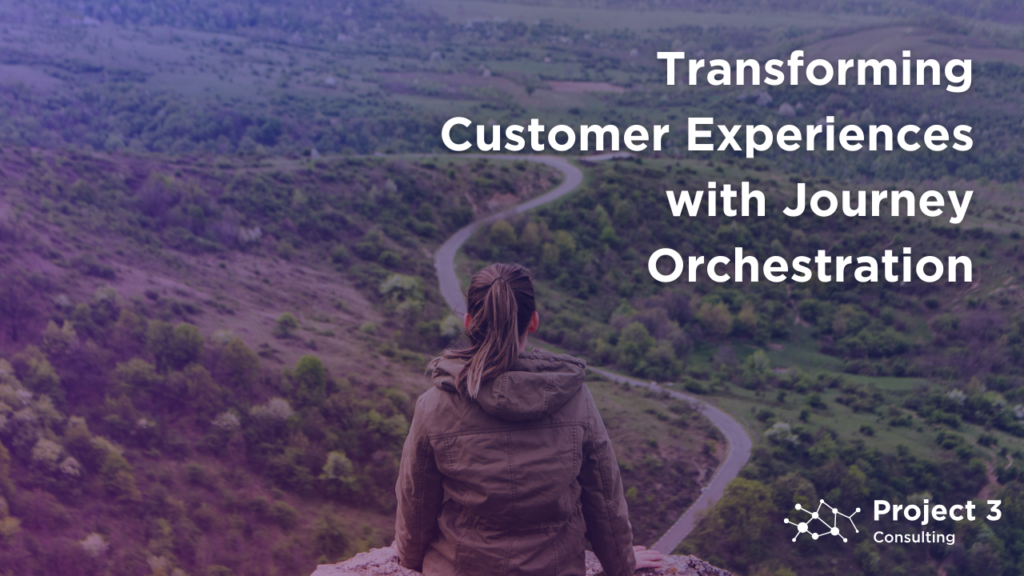
Picture this: You stroll into a store, browsing for the perfect pair of pants, when suddenly, an enthusiastic salesperson tries to sell you paper clips. As you navigate through the aisles, you’re bombarded with offers for artisanal gelato samples and flashy ads for loafers. After a few minutes of misdirection and bemusement, you abandon your quest and leave, vowing never to return.
This chaotic experience mirrors what happens when a website or app lacks journey orchestration – the art of tailoring the customer experience until each visitor encounters content relevant to their needs.
So, What Exactly is Journey Orchestration?
It’s the magic behind the scenes, utilizing a blend of customer data to customize on-site content, emails, text messages, and essentially, every message the customer encounters. For instance, imagine a 25-year-old banking customer on the bank’s website, keen on starting a solo 401(k). With journey orchestration, they’d see tailored content guiding them through this investment journey, perhaps even adjusting the 401(k) content based on other information, such as income level. Ideally, any journey optimization program can do this in real-time, changing content on one screen based on activity from the prior screen.
This is done by using customer data, both internal and external to your business, to customize on-site content, emails, text messages–basically, all messaging the customer sees. For example, on a banking site, a 25-year-old person who has indicated prior interest in starting a solo 401(k) might be shown a content block specifically for that investment type. And that 401(k) ad might change its content based on that person’s income level. Ideally, any journey optimization program can do this in real-time, changing content on one screen based on activity on the prior screen.

But here’s the kicker – journey orchestration isn’t a one-person show. It’s a symphony conducted by a diverse ensemble of teams – marketing maestros, development dynamos, data wizards, legal eagles, and more. Together, they harmonize their efforts with a singular focus: crafting an unparalleled customer experience.
Of course, this symphony requires a symphony hall of data – not just clicks and page views but a rich tapestry woven from third-party data, customer support insights, email interactions, and even brick-and-mortar sales. This data, pooled into a centralized repository like a data lake, paints a comprehensive portrait of the customer.
But data alone isn’t enough. Enter journey orchestration, the decision-making engine fueled by data and steered by CX, marketing, technology, and product strategy. While you could build this engine in-house, many opt for journey orchestration software from industry leaders like Adobe, Bloomreach, or HubSpot to shoulder the tech burden.
None of this is easy. It takes dedication, commitment to purpose and a lot of work, but it pays off. Customer satisfaction, cost reductions and revenue growth are just a few of the benefits.
Yet, amidst the dazzle of technology, let’s not forget the human touch. Journey orchestration thrives on continuous improvement, fueled by A/B testing, multivariate experiments, and insights gleaned from a robust customer data platform (CDP). It takes dedication, commitment to purpose and a lot of work, but it pays off. Customer satisfaction, cost reductions and revenue growth are just one of the few benefits.
Here’s how to optimize your journey orchestration:
Craft a Vision: Sketch out a roadmap spanning not just weeks but months and years, charting your course toward customer delight.
Fortify Your Foundation of Data: Make sure the underlying data is solid. Bad data equals bad outcomes, no matter how good the planning or execution.
Measure What Matters: Focus on KPIs that align with your goals; remember, it’s not just about clicks but converting them into tangible results like revenue.
Embrace Iteration: Some ideas will soar while others may falter – embrace the process of continuous refinement and discard what doesn’t resonate.
Forge a Unified Front: Build a team specifically for journey orchestration. The whole organization will be involved, but centralization of the specialty is key to driving cohesion and clarity.
Align on Objectives: Ensure all teams march to the beat of the same drum, united in their pursuit of elevating the customer experience.
Yes, journey orchestration demands time, effort, and investment. It may necessitate restructuring and retraining, but the dividends – heightened customer satisfaction, streamlined operations, and soaring revenues – make it a voyage worth undertaking.
So, are you ready to compose your own symphony of customer delight?




